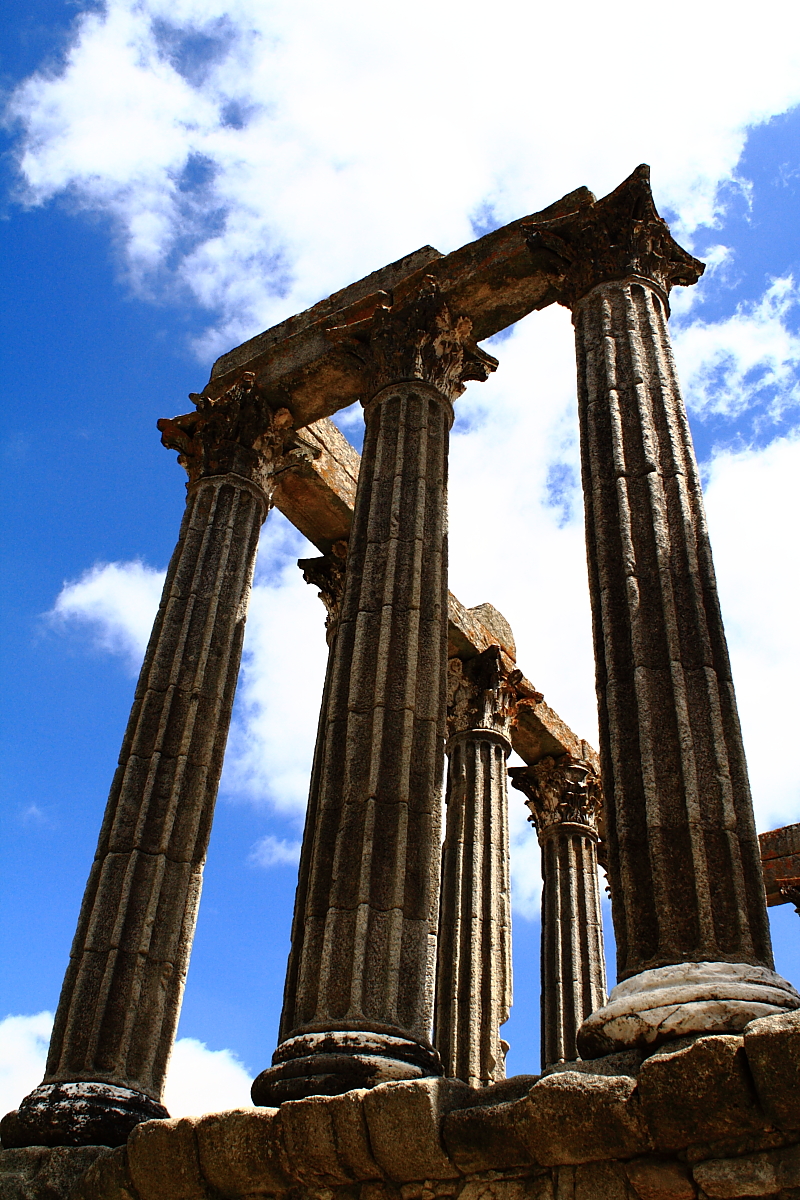Every once in a while I almost forget I'm in Europe. That I'm in the Old World. Lisbon is very old looking, but in order to see it you have to go down town. There are ruins here and there that you see amongst the newer buildings, but they have a tendency to fade or blend into their surroundings over time (I know, I haven't been here long, but it's already doing it and after a year or so, they will probably become normal to me). I do get a shocking reminder that I'm not in "Kansas" anymore when we travel to visit other cities/places around the country.
Towards the middle of the Portuguese region of Alentejo, you'll find such a place in the beautiful and ancient city called Évora, known as Ebora to the Lusitanians (the people who inhabited Portugal and the rest of Iberia since before the Romans took it over back in the day, as they did to nearly everywhere). This city is over two thousand years old and it shows everywhere you look.
The architecture, especially the Roman temple in the city center, often called Templo de Diana, made me awestruck when I first laid eyes on it. That part of me that has always been fascinated with the old world, its art, its legends and myths, and its history was instantly sparked to life by the sight of the these ruins.
The temple was built back in the 1st century and then modified in the 2nd and 3rd centuries AD. As for it being a Temple of Diana, as the name suggests, it actually got this association from a legend conceived by a Portuguese priest in the 17th century. It's thought that more than likely it was actually built for the Roman emperor Augustus.
In the 5th century, Évora was invaded by the Visigoths and the temple was destroyed. The ruined pieces that were no longer a part of the beautiful Roman temple were put to good use by being added to the tower of the Évora Castle later during the Middle Ages.
The left over ruins at the temple site wound up as a slaughterhouse and then as a place for the Inquisition to carry out it's gruesome executions throughout that dark time. In fact the former Palace of the Inquisition was founded in 1536 nearby. Apparently in just Évora there were over 22,000 people condemned.
It's places like this that make me remember that I'm in a whole different world. One that has a history that I've only read about or saw photos of. And knowing that this is only but one of those things, just in Évora (ever heard of the Capela dos Ossos? Yeah it's in Evora too, but that's for another post.), makes me want to find more.









4 comments:
Very well written and said! You did a wonderful research! :0)
Even I didn't know about the Inquisition in Evora!... and your words and description took me back down memory lane. Oh! The picture is REALLY nice! Well done!!! ;0)
Thank you Lena! I hope to get some more photos up on flicker that I took while we were there :)
It is good to know the people in Portugal have been recycling since at least the middle ages. I love your blog!
PS: Do you have any shot of a part of the tower of the Évora Castle that came from the original 1st century building?
Thank you :)
Unfortunately I didn't get a chance to even see the castle this time around. Hopefully when we get the chance to go back I'll have more time to do a little more looking around :)
Post a Comment